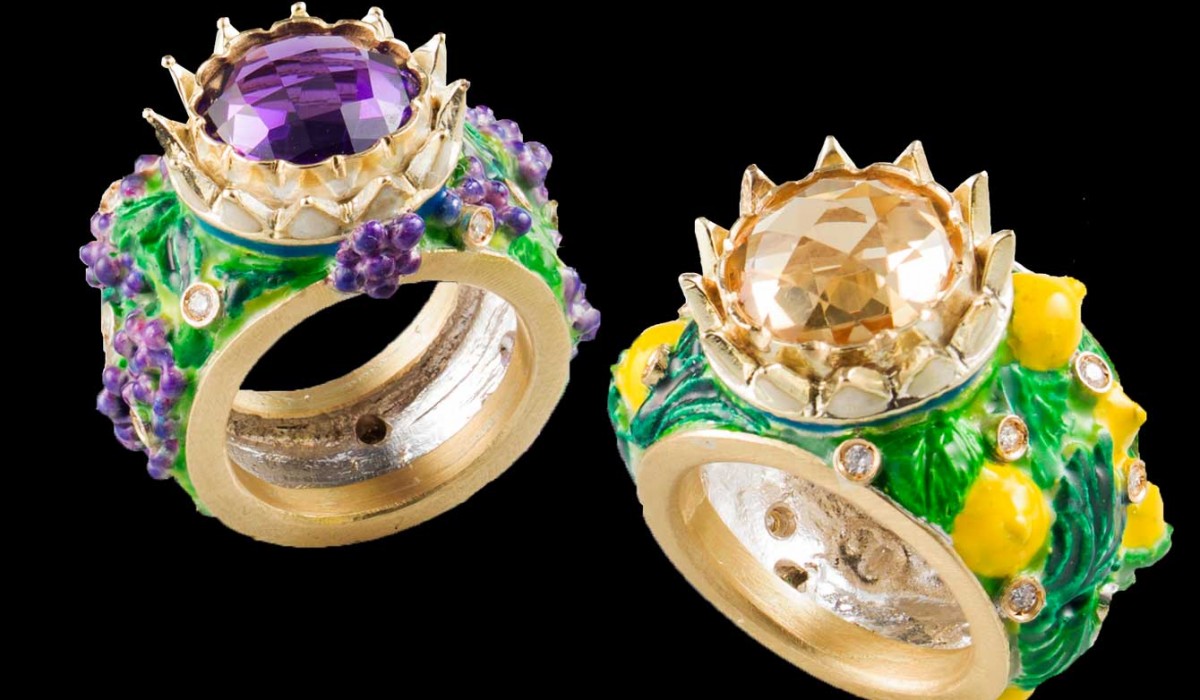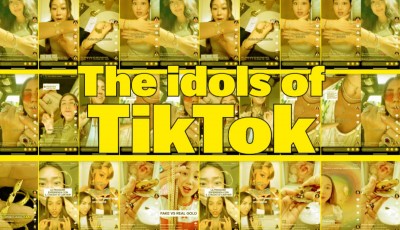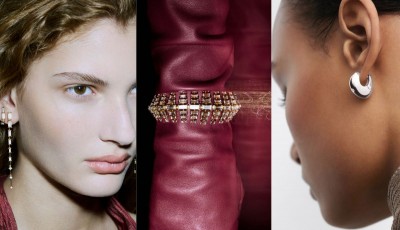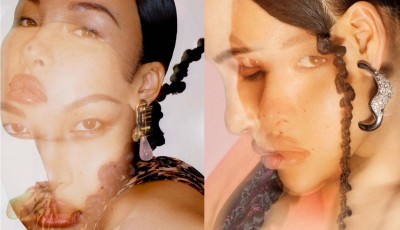Precious alchemies
In his workshop in Florence, the goldsmith, Alessandro Dari, shapes the waxes of his ring-sculptures with the master skill of a Renaissance artist. And dominates precious material.
by Roberto Chilleri
Florence, Palazzo Nasi Quaratesi. Raphael’s Madonna of the Goldfinch was once to be found here. Alessandro Dari, the goldsmith who is able to shape the waxes of his ring-sculptures with the master skill of a Renaissance artist, has his workshop in this history-ridden building. A skill that originates from an unstoppable talent, rumour of which even reached the Italian Ministry of Arts and culture, which accordingly invested the workshop with the status of "Museum-workshop". Dari has created some wonderful sacred ornaments and three of his jewellery items are part of the contemporary collection in Florence’s prestigious Silver Museum (Museo degli Argenti). His background includes a philosophical study: for him, as for the alchemists, substance has a soul. His ring entitled “Genesi alchemica” (Alchemic Genesis) is an example and is kept inside a glass bell jar crossed by 30,000 volts generated by
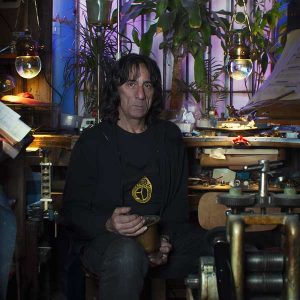 Alessandro Dari
Alessandro Dari
a Tesla bobbin built following an nineteenth-century layout. According to the artist, after 138 years of electrical discharge, the ring will have completely dissolved into oxide powder, symbolising the alchemic transmutation. But this purely conceptual ring is an exception: almost all of Dari’s jewellery is meant to be worn.
Going into Alessandro Dari’s workshop is like crossing the threshold into a parallel world. The goldsmith artist sits at his workbench amid tools and various works in progress. Taking in the surroundings, one feels like being in the middle of a modern saga like The Lord of the Rings or Star Wars. A story where Time has no defined value, where objects have a symbolic and mysterious meaning, a place full of passion for alchemic studies and enormous spirituality.
You actually never did any formal apprenticeship. What made you decide to become a goldsmith?
“When I was twelve, I found a snake-shaped ring in Sienna, my hometown, and I remember thinking that I would like to make rings when I grew up. To be honest, when I started I had completely forgotten that episode and yet, believe it or not, for one whole year I only made snake-shaped rings...”
You are a qualified pharmacist and your goldsmith day begins after doing the night-shift in a pharmacy in Florence. How can someone like you, who has held goldsmith courses at University, still not give up your original profession?
“First of all, I should mention that my days are very long because I only need three hours’ sleep to wake up in top form... But it is also true that, since my goldsmith business is not an indispensable source of income, for me it is a form of art in which I can express myself freely.”
Some of your works have recurring elements like rose perfume, a spiral staircase, the diamond...
“They are symbols of mankind’s path towards awareness and represent his elevation towards heaven. And if the tower is wrapped within a net, this symbolises man’s impossibility to approach God.”
Is it true that you are creating an automated jewellery item?
“For the moment I have had to content myself with a pendent, a Ragno Sacro or Sacred Spider, which only moves when it is placed on a special surface. But, yes, it’s true that I am still dreaming of making jewellery that moves when it is worn on the neck, stimulated by sound and light or by interacting with the person, but it will take years to create.”
Flaubert said: ’Madame Bovary c’est moi.’ Is your work self-expression too?
“I have always wanted to give my works a meaning. “Nato dal Mare” (Born of the Sea) represents a little of my past life: as you can see, the items are displayed in a small aquarium and the faces of my mother and I emerge from within.”
Have you maintained a strong bond with your family?
“Even though I didn’t see it until much later, all of my jewellery is basically dedicated to my parents, including my father, who believed in me and allowed me to choose the road I preferred.”
I don’t know why, but I get the impression that, even if you deal with profound themes, there is also a hint of self-irony...
“I would perhaps also mention humanity... In any case, my work is also enjoyment and I like to represent the things I love the most, architectures and the female body. In one of my rings, I have portrayed the love of a woman who, on taking flight, sees her own arms turn into the wings of a butterfly. The structure is of a flexed body, where the feet join the head. It fulfils one of my old dreams of creating a ring in which there is no distinction between the shank and the upper part.”
You have recently been paying homage to your second home, Florence...
“Yes. I took inspiration from Dante’s Divine Comedy and above all from the ceramic pottery of Della Robbia, a theme that the goldsmith art has never given the attention it deserves. To produce the colours of their enamels, I used a substance that is originally for medical purposes. Applying a very thin layer gives a splendid and bright glassy effect.”
[ts_row] [ts_one_third] 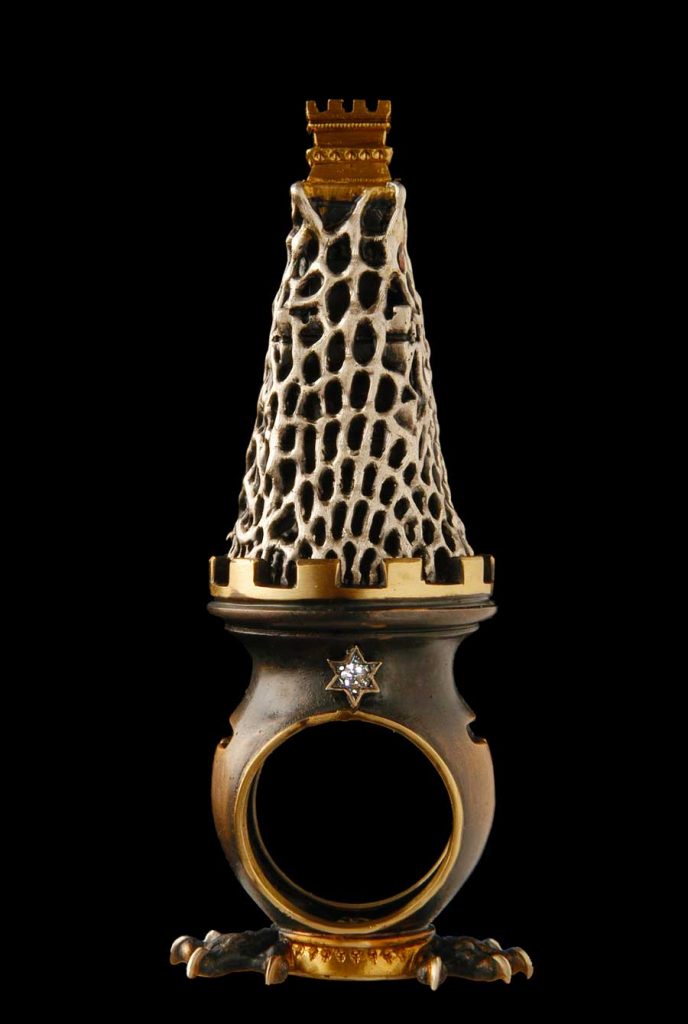 [/ts_one_third] [ts_one_third]
[/ts_one_third] [ts_one_third] 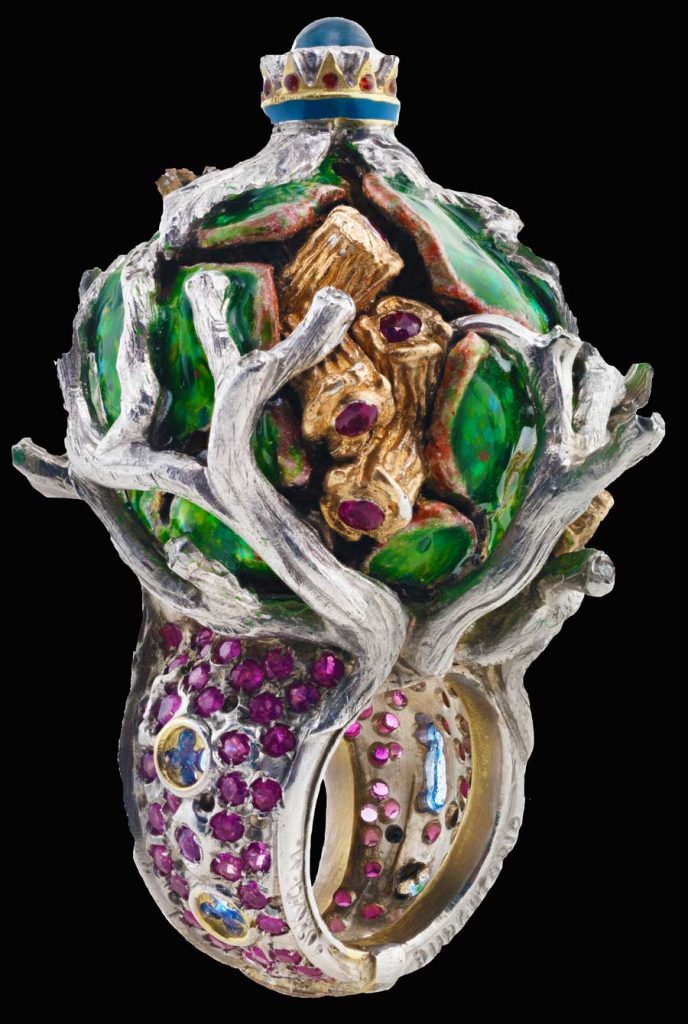 [/ts_one_third] [ts_one_third]
[/ts_one_third] [ts_one_third] 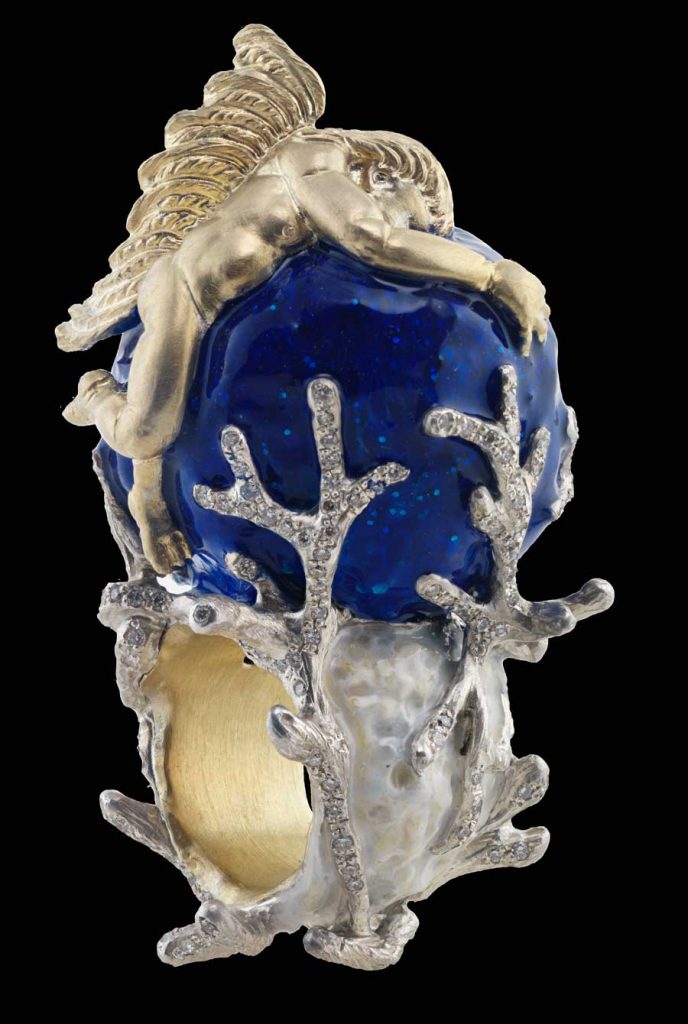 [/ts_one_third] [/ts_row]
[/ts_one_third] [/ts_row]


